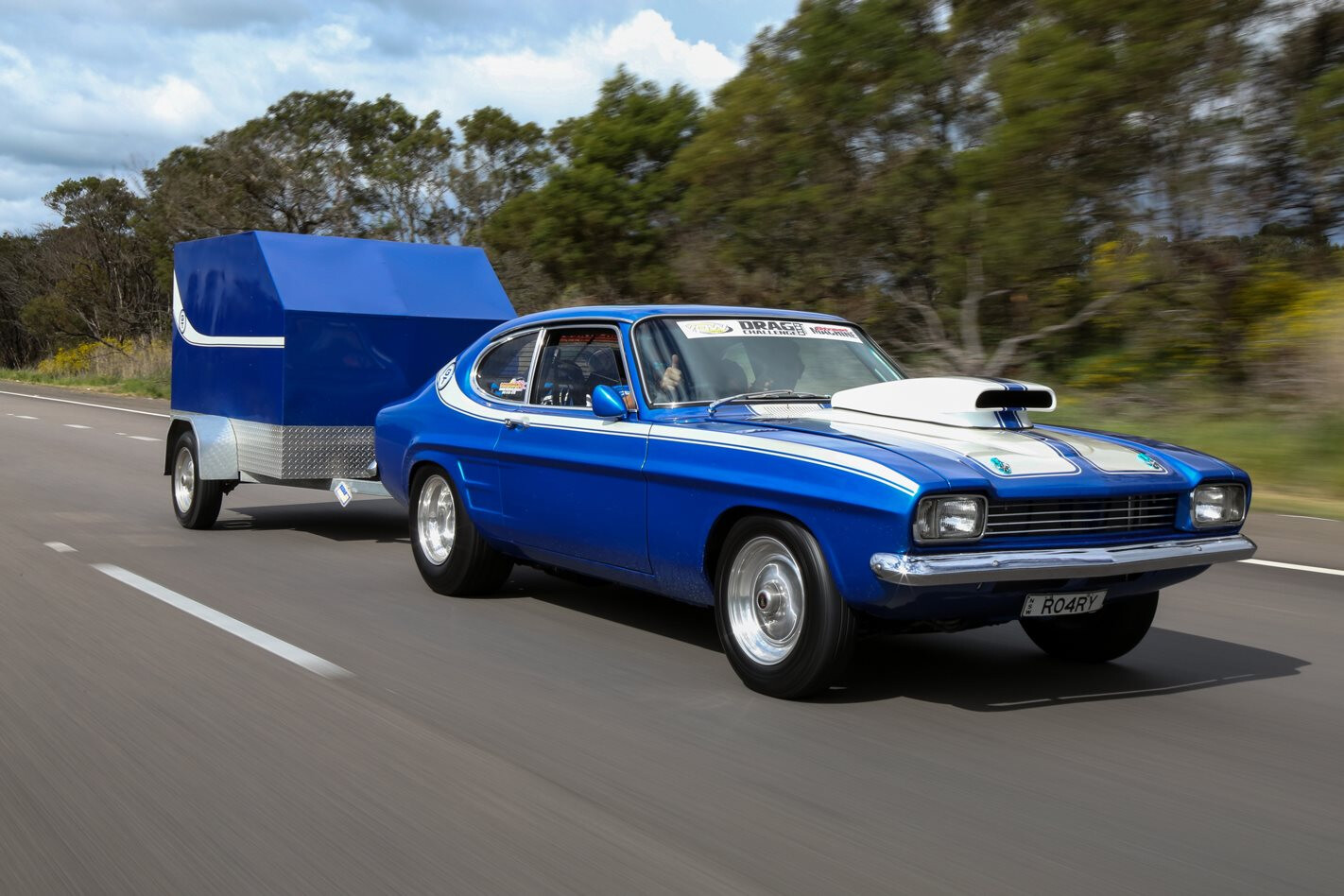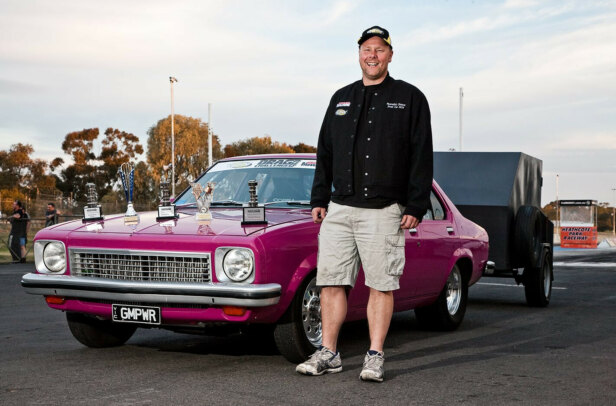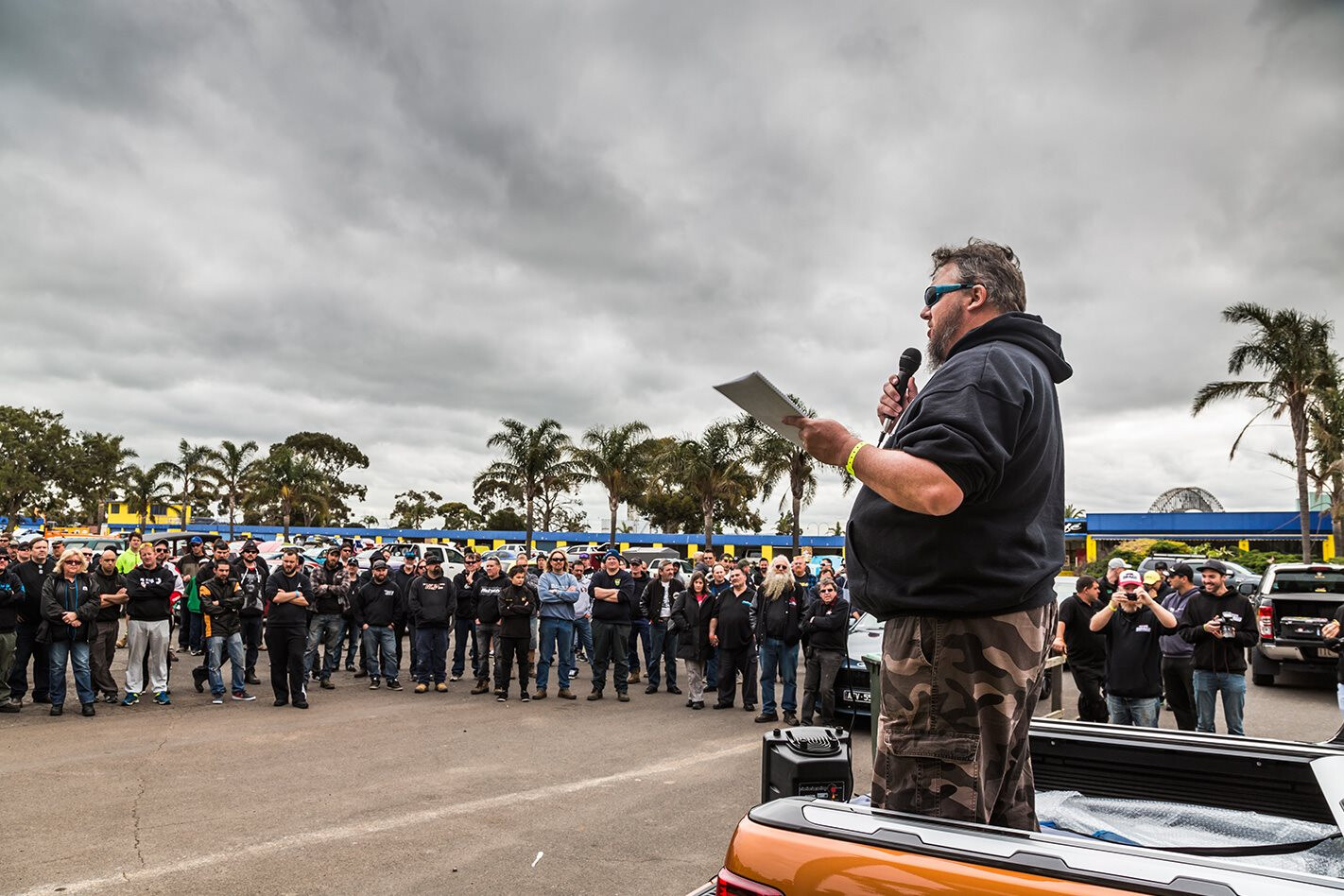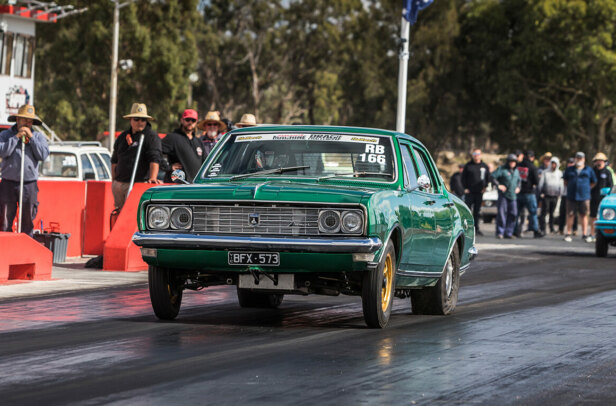WE GET asked a lot of questions about Drag Challenge, so we thought we’d give you guys and girls a heads up about what’s happening. We’ll be taking entries shortly, but numbers will be limited and if you’re interested in coming along then you probably should have sent us an e-mail already.
This year Street Machine Drag Challenge takes place between Friday 23 October and Tuesday 27 October. It’ll be five days, five tracks, 1500km!
Here are the basics:
• The event is open to four-wheel vehicles of any year, make or model. No bikes.
• Current licence and registration are required; we’ll need to see these before the event starts. No dealer plates allowed.
• Vehicles in competition must have functional headlights, tail-lights, brake lights, turn signals, horn and a rear-view mirror. Headlights must be of OE-type design.
• Vehicles that do not meet ANDRA safety rules for their ET and speed may be prevented from making further runs, but we will accept their time slip. Drivers quicker than 10.99 must be ANDRA-licensed.
• Any type of fuel may be used, but if it’s something exotic you’ll have to find some way of carrying extra fuel safely. No fuel lines running from trailers.
• People caught doing burnouts or any other anti-social behaviour that brings the event into disrepute will be disqualified. We cruise, we race, we have fun – let’s not screw it up.
NO CAR TRAILERS, NO SUPPORT VEHICLES
Towing to the track for Day One is fine, but once you have registered at the track on the Friday morning the only reason your car will be seen anywhere near a car trailer is if you are out of the competition. You will not be able to access your tow vehicle and/or trailer until the end of the competition – unless you are already out. This includes on the open road, at fuel stops and at motels. No tow cars!
• Vehicles may not be led or followed by support vehicles of any kind. A support vehicle is one used to supply (or with the intent of supplying) anything to help or rescue a competitor’s car, or to carry anything for a competitor, including luggage, tools, fuel, repair parts, spares and helpers or crew. Support vehicles towing just-in-case trailers are not allowed. We’ll give armbands to entrants and their passengers/helpers and anyone found working on a car without an armband will get that car disqualified.
• All vehicles must be driven under their own power during the entire Drag Challenge competition and may not be towed, trailered or pushed by another vehicle at any time. This includes if you have been directed to tow the vehicle by any authorities – if this happens, you are out. The exception is in the event of an emergency, in which a vehicle needs to be removed from the roadway or other dangerous situation, in which case assistance may be used to move the car a short distance to a safe area, for example, to the next truck parking area.
• A Drag Challenge phone number will be supplied to all participants. If an entrant wishes to withdraw from the competition by loading the vehicle on a trailer, or otherwise using an illegal support vehicle, the number must be called immediately to notify staff of the withdrawal.
• Each competition vehicle may tow a single-axle trailer no more than 190cm high from ground to top, including the height of anything carried on top of the trailer. Trailers may not contain any components that contribute to cooling, charging, oiling or fuelling the competition vehicle while the trailer is in motion.
WORKING ON COMPETITION VEHICLES
• Drag Challenge competitors may borrow or buy parts, tools and supplies from each other and may help each other with manpower. However, vehicles entered with the obvious intent of supporting another competitor with parts, tools, supplies or manpower will subject both entries to disqualification at the race director’s discretion. It is not our intent to keep friends from helping friends, but to prevent entries from acting as support vehicles for other competitors.
• We understand that friends will want to follow along, but helpers may not lead or follow in separate vehicles. Everyone in a Drag Challenge-entered vehicle will get an armband, and anyone seen helping a car without an armband on will disqualify that vehicle. All Drag Challenge helpers must travel in an entered vehicle; you can swap seats with other helpers, but you can’t hitch a ride in your friend’s Camry because it’s more comfortable.
• While you cannot have a team of helpers following along, you can enlist the help of professional businesses along the route. For example RACV for roadside assistance, or maybe a local transmission shop, but they will have to work on the car where it is, or you remove the parts where it’s broken down and get a lift to a place where the parts can be repaired.
• Ordering parts or fuel and having it delivered to drag strips or hotels during Drag Challenge is allowed.
• Swapping engines so that one is used for the drag strip and another for the on-road drives is not allowed. The same engine block is to be used for the entire competition.
THE ROUTE, THE CHECKPOINTS
• The on-road drive is part of the Drag Challenge competition; following the specified route is mandatory. Traffic, potholes and winding roads should be expected.
• Each day’s drive has at least one mandatory checkpoint. Each entrant is required to take a photo of their car at the checkpoint and text it to the phone number provided.
• Preferred hotel details will be supplied after entry, but competitors are not required to stay at these hotels and may stay anywhere they wish as long as the entire route is followed.
RACE PROCEDURES
• Competitors are required to sign in and get scrutineered at Day One on Friday 23 October before 11am. Tech inspection and registration will be open at 8:30am that day (TBC).
• Competitors may be tech-inspected at each drag strip before running. All drivers must be present. It is up to the entrant to ensure their vehicle will pass tech inspection at each track for the their ET and speed capabilities.
• The track opening times vary from track to track; check your schedule for the running times. Schedule adjustments may be made pending unforeseen circumstances, but we will try to keep you informed of any changes.
• Competitors will be allowed to make as many passes as they wish each day on a first-come, first-served basis, until the race director announces that the staging lanes are closed. Drag strip sessions may be divided into run groups. Times and details will be announced at the drivers’ meeting and may change from day to day, depending on conditions.
• Each competitor must complete each track day within the specified times to remain in competition. To complete a track day, a competitor’s car must stage under its own power and take the green light. Entries that take the green but are unable to complete a full drag strip pass will be given an ET of 20 seconds (and a speed of 50mph) for the day. If a competitor misses a track day and is out of the running, they may be able to make exhibition runs during the remaining days of Drag Challenge if time allows.
• It is the competitor’s responsibility to hand in their time slips to the specified Drag Challenge official each day before leaving the track. Once a slip is handed in, no other time slip for that car will be accepted that day.
• Route maps to the next city will be provided only once a competitor has handed in their time slip.
• In the event that a day of racing is rained out, competitors are still required to drive the entire route and must check in during the specified hours at the drag strip in order to remain in competition and to receive additional information about the schedule and driving directions to the next track. In the event the finals are rained out, the following day may be held as a rain date.
• Protesting another racer requires filling out an official protest form (available from the event director) detailing the rule infraction, submitting a $100 fee, and supplying evidence, including photos or video. If the protest is upheld or negated by forfeiture, the $100 is returned. If it is not upheld, the $100 goes to the racer being protested. No further discussion will be entered into.
• Each entrant may only compete in one class. You must state your intended class when registering, and class changes are not allowed after the first day of racing.
•The winner is the car with the lowest average ET during the event; average mph is used as a tiebreaker.
CLASSES
OUTLAW BLOWN CATEGORY
For vehicles that run a radial tyre wider than 275, or slicks of any size, or all-wheel drive, with superchargers, nitrous or turbos, or any combination thereof.
OUTLAW ASPIRATED CATEGORY
For vehicles that run a radial tyre wider than 275, or slicks of any size, or all-wheel drive, with no forced induction at all.
STREET RADIAL BLOWN CATEGORY
For vehicles that run a radial tyre 275 or narrower running superchargers, nitrous or turbos, or any combination thereof.
STREET RADIAL ASPIRATED CATEGORY
For vehicles that run a radial tyre 275 or narrower with no forced induction at all.
DYO
The DYO class (Dial Your Own) is for entrants who don’t wish to compete in the ‘tyre classes’, and because we will be competing at both eighth-mile and quarter-mile tracks we will have to adjust some times to suit. All eighth-mile times will be multiplied by 1.555 to create a quarter-mile time; this will be for Portland and Mildura tracks only.
Dial Your Own racing is all about consistency so we will be looking for the most consistent cars across the five tracks. We will be looking at your fastest and slowest times from the five tracks to calculate the spread, and this will determine your finishing result. We will be measuring the spread down to as many decimal places as necessary to determine a result. Entrants can make as many passes in the time allowed as they like, but they must provide just one time slip to the nominated Drag Challenge official before each day’s time cut-off.
Example:
Racer A runs 11.520 at Track 1, 7.43 at Track 2 (x1.555=11.553), 7.50 at Track 3 (x1.555=11.662), 11.583 at Track 4, and 11.55 at Track 5 again. His quickest time is 11.520 and the slowest is 11.662, which gives him a spread of 0.142.
Racer B runs 10.985 at Track 1, 7.032 at Track 2 (x1.555=10.935), 7.072 at Track 3 (x1.555=10.997), 11.012 at Track 4 and 10.962 at Track 5 on the last day. Her quickest time is 10.935 and the slowest is 11.012, which gives her a spread of 0.077.
In this scenario Racer B would be the winner.
DAY FIVE RACING
After Drag Challenge competition is over, we will be running two additional brackets. The first bracket will be a heads-up elimination shootout, where all the entrants from the tyre classes will run heads-up against each other. The second bracket will be a DYO elimination competition for all the DYO guys to compete against each other directly. We will award winner and runner-up trophies for each bracket.
WHAT CAN YOU WIN?
A Street Machine Drag Challenge jacket goes to the overall winner, which is the entrant with the lowest average ET of the competition, and they will be named Australia’s Quickest Street Car.
There will also be first- and second-place trophies for each class. There may be other prizes depending on sponsor support, including:
Quickest Without A Trailer, Quickest Holden, Quickest Ford,
Quickest Mopar, Quickest Chev, Quickest Six and more
HOW TO ENTER
To express your interest, send a photo of your car, some basic specs and your current PB to:
[email protected]
If you are accepted, we’ll send you info on how to enter, including payment details.




Comments